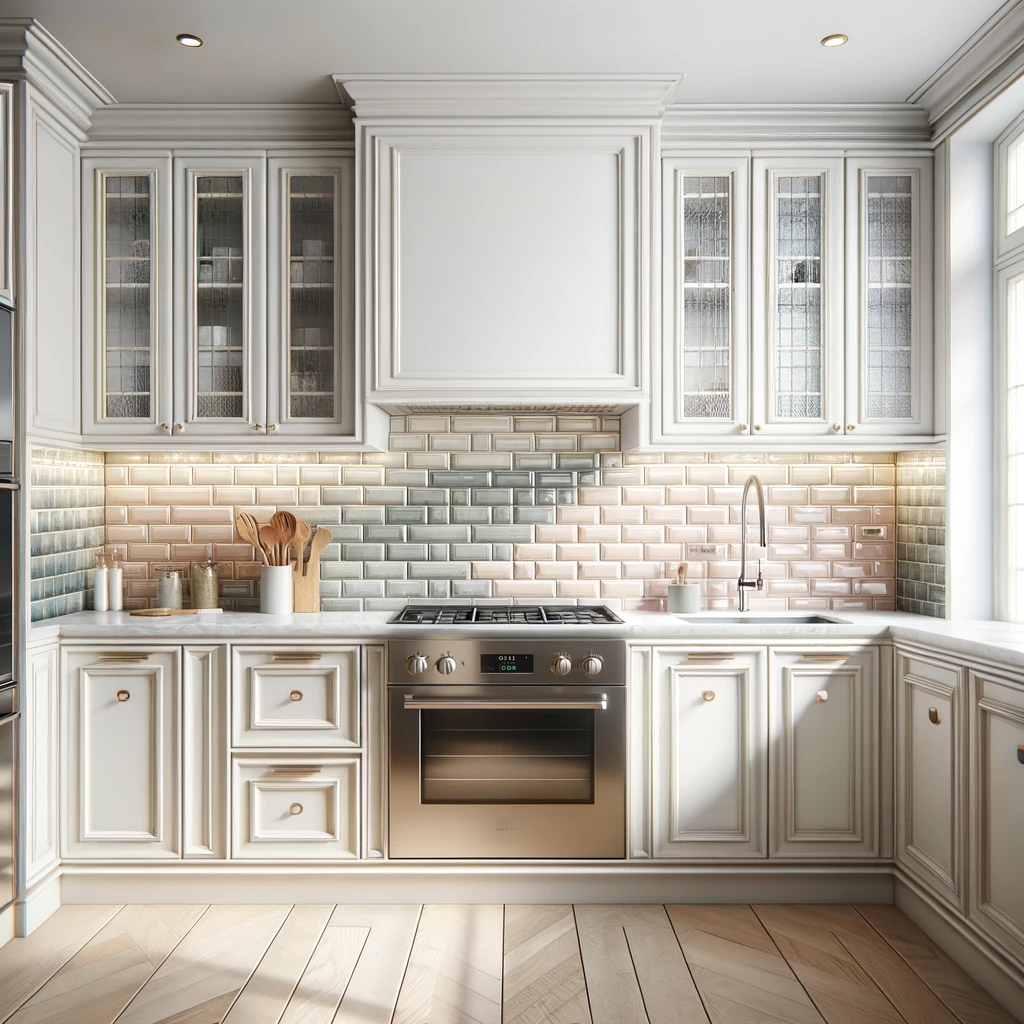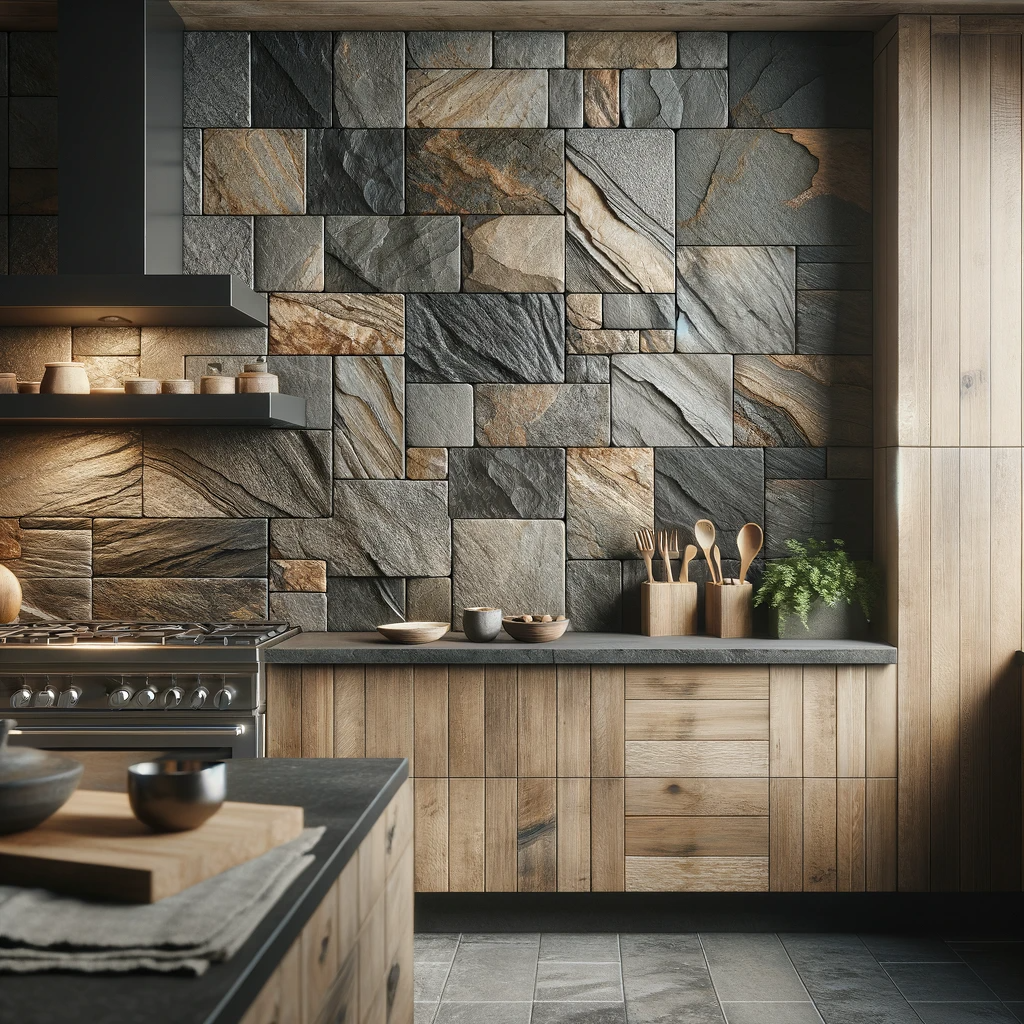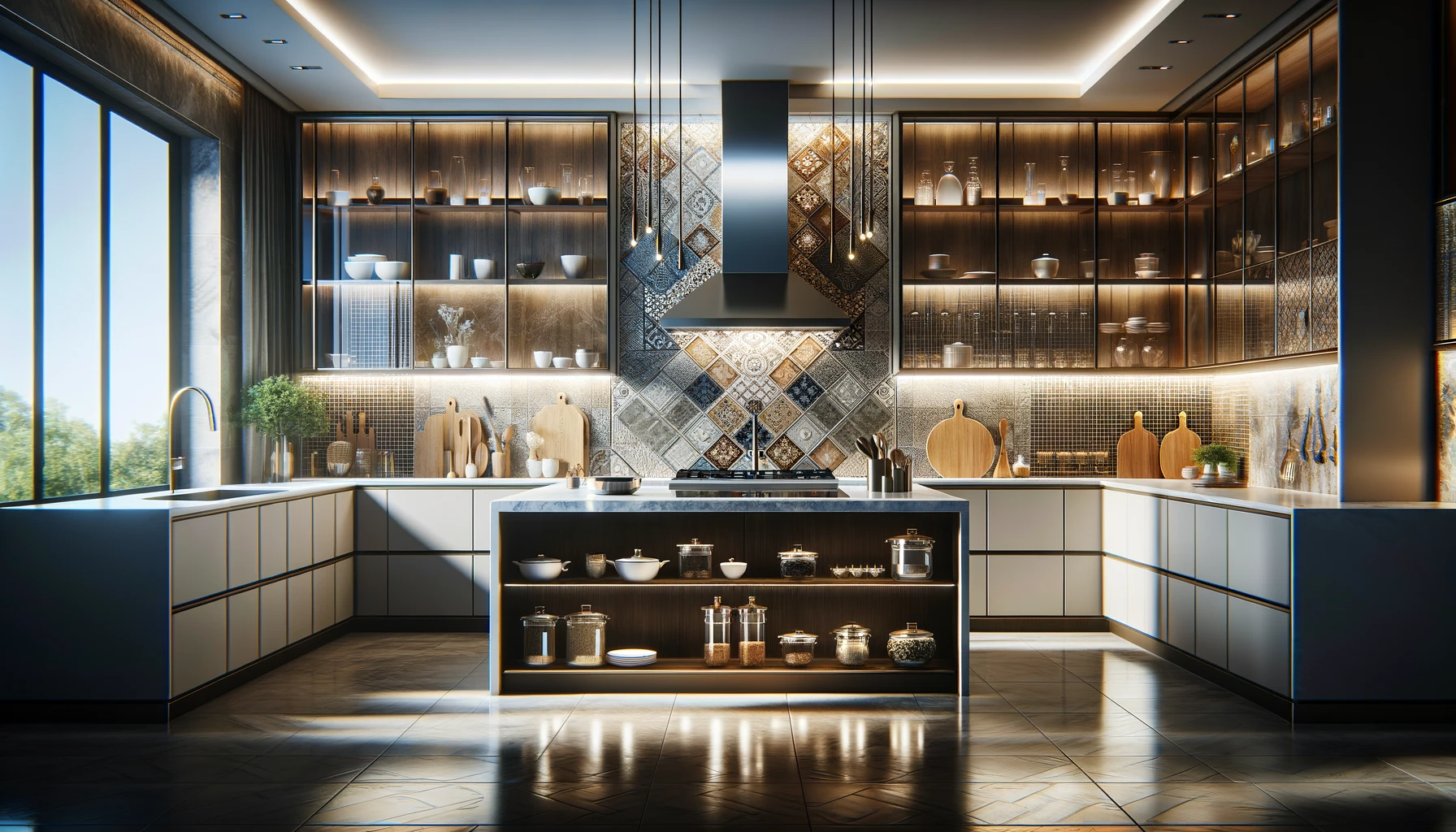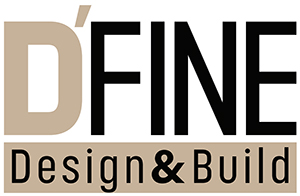The kitchen backsplash is an essential element in any kitchen design, not only serving as a protective barrier against splatters and spills but also as a visually appealing focal point. In this comprehensive guide, we will delve into the world of kitchen backsplashes, exploring the various materials available, factors that influence costs, and practical tips on managing expenses.
From ceramic and glass to stone and metal, we’ll uncover the pros and cons of each material, shedding light on the impact they have on overall costs. We’ll provide insights into the key considerations such as size, labor, and design that play a pivotal role in determining the final expenditure. Whether you’re aiming for a budget-friendly option or willing to invest in a high-end backsplash, this article will equip you with the knowledge needed to make informed decisions. Stay tuned as we break down the pricing estimates and reveal money-saving strategies to help you achieve the kitchen backsplash of your dreams without breaking the bank.
What Are The Different Types Of Kitchen Backsplash Materials?
Kitchen backsplashes can be crafted from various materials, including ceramic, vinyl, marble, stone, and glass tiles, each offering unique aesthetic and functional attributes.
While ceramic tiles present a versatile and cost-effective option, marble backsplashes exude luxury and elegance, making them a coveted choice for many homeowners. Natural stone, such as granite or slate, can introduce earthy textures and rugged appeal to the kitchen space. On the other hand, glass tiles are admired for their ability to reflect light, creating a luminous and ethereal atmosphere.
The use of stainless steel as a backsplash material brings a contemporary and industrial aesthetic, along with the benefits of high durability and easy maintenance. Incorporating brick can add a rustic and warm charm to the kitchen, providing a timeless appeal that blends well with various design styles.
Ceramic
Ceramic tiles are a popular choice for kitchen backsplashes, known for their durability, easy maintenance, and versatile design options.
Their durability makes them resistant to heat, moisture, and stains, which is essential in a kitchen environment. With an array of colors, patterns, and textures, ceramic tiles offer design flexibility to complement any kitchen style, from modern to traditional. They are also an ideal choice for those looking to take advantage of local labor rates, as installation costs are often affordable due to the widespread availability of skilled tile installers in many areas.
Glass
Glass tiles offer a sleek and modern aesthetic for kitchen backsplashes, featuring reflective properties that can brighten the space and create visual depth.
The contemporary appeal of glass tiles lies in their ability to enhance the overall ambiance of a kitchen, elevating it from functional to stylish. Their versatile peel-and-stick application makes them a convenient choice for homeowners looking to renovate their kitchen without the hassle of traditional tiling.
Not only do they bring a sense of modernity, but they also come in a wide array of colors, sizes, and finishes, offering ample design possibilities. Glass tiles further add a touch of sophistication, creating a captivating visual effect as light plays off their reflective surfaces.
Stone
Stone backsplashes, such as marble, slate, and natural stone, exude a timeless elegance and unique character, adding a sophisticated touch to the kitchen environment.
Marble, with its veining and luxurious appeal, brings a sense of opulence to any kitchen. The smooth and polished surface of marble creates a sleek and stylish look that complements modern kitchen designs.
On the other hand, slate offers a rugged charm with its earthy tones and textured surface. It’s a popular choice for those seeking a rustic or industrial aesthetic.
Natural stone backsplashes come in a diverse range of materials, such as granite, travertine, and onyx, allowing homeowners to personalize their kitchen with a unique and striking feature that complements their style and preferences.
Metal
Metal backsplashes, especially stainless steel, offer a contemporary and industrial-inspired aesthetic while providing exceptional durability and resistance to heat and moisture.
These backsplashes are not only visually striking but also highly functional, making them an ideal choice for modern kitchens. The reflective surface of stainless steel creates a sense of spaciousness and brightness, while its non-porous nature makes it easy to clean and maintain.
Metal backsplashes are available in various finishes, allowing homeowners to achieve a tailored look that complements their overall design scheme. Whether it’s brushed, hammered, or polished, the versatility of metal backsplashes ensures that they harmonize effortlessly with different styles, from sleek and minimalist to rustic and eclectic.
Porcelain
Porcelain tiles are a versatile choice for kitchen backsplashes, known for their resilience, low maintenance, and diverse design options that mimic natural materials.
These tiles offer durability and resistance to heat, making them an ideal option for behind cooking areas. Their low porosity makes them highly resistant to staining, a practical advantage in a kitchen environment.
In terms of design, porcelain tiles can effortlessly emulate the look of stone, wood, or even intricate patterns, providing a wide array of options for creating a visually appealing kitchen space.
Marble
Marble backsplashes exude a luxurious and timeless appeal, featuring unique veining patterns and a classic elegance that elevates the kitchen’s visual ambiance.
The distinctive nature of marble reflects the beauty of natural stone, adding an opulent touch to any culinary space. Its durability and heat resistance make it a practical choice for protecting walls from splatters and spills.
The versatile palette of marble offers a wide range of colors and textures, allowing for seamless integration with various kitchen designs. Whether it’s Carrara, Calacatta, or Statuario, each type of marble brings its individual charm to the backsplash, creating a captivating focal point in the heart of the home.

What Are The Factors That Affect Kitchen Backsplash Costs?
Several factors influence kitchen backsplash costs, including the chosen material, size and coverage area, labor rates, design complexity, and additional features such as trim and decorative accents.
The material expenses for kitchen backsplashes vary widely. For example, natural stone like marble or granite tends to be more expensive compared to ceramic tiles. The labor rates can significantly impact the overall cost. More intricate designs and patterns may require more time and expertise, increasing labor costs. It’s important to consider the design complexity as well, as custom designs or intricate patterns may require more labor and specialized skills. When planning a kitchen backsplash, it’s crucial to weigh the various cost-influencing factors to ensure a budget-friendly yet visually appealing solution.
Material
The choice of material significantly impacts kitchen backsplash costs, with options ranging from budget-friendly ceramic and vinyl to high-end natural stone and metal tiles.
In terms of budget-friendly options, ceramic and vinyl tiles are widely popular due to their affordability and easy maintenance. With prices typically ranging from $2 to $10 per square foot, they offer a cost-effective solution for homeowners looking to remodel their kitchen on a budget.
On the other hand, high-end natural stone and metal tiles can significantly elevate the visual appeal of a kitchen, but they come with a higher price tag. Materials like marble, granite, and metal tiles can cost anywhere between $15 to $50 per square foot, making them a luxurious yet pricey option.
Plus the material cost, it’s important to consider the labor expenses involved in the installation of backsplash. Labor rates vary depending on the complexity of the project and the region, but on average, homeowners can expect to pay $40 to $60 per hour for professional installation.
Size and Coverage Area
The size and coverage area of the kitchen backsplash directly impact the overall costs, with larger areas and intricate designs requiring more material and labor, thus increasing the expenses.
For smaller kitchen backsplashes, the cost is usually lower due to the reduced amount of materials and labor involved. When opting for larger areas or intricate designs, the expenses can significantly increase. The square foot requirement plays a crucial role, as every additional square foot increases the material cost. DIY options can lower labor costs, but intricate designs may still require professional installation to ensure a polished finish.
Incorporating additional features such as custom patterns, special materials like glass or natural stone, and integrated lighting can further elevate the cost. It’s essential for homeowners to carefully consider their desired size, design complexity, and any additional features to budget effectively for their ideal kitchen backsplash.
Labor Costs
Labor costs for kitchen backsplash installation vary based on local labor rates, complexity of the design, and the need for specialized skills or customization.
In regions with higher costs of living, such as urban areas, labor rates for backsplash installation may be higher than in rural areas. Factors such as the availability of skilled labor and competition among contractors can also impact local labor rates.
While some homeowners opt for the do-it-yourself approach to save on labor costs, the complexity of the design and the specialized skills required for certain materials, like mosaic or intricate patterns, can justify engaging professional installers. The customization or unique features in the design, such as custom-cut tiles or non-standard layouts, can further influence labor costs.
Design and Pattern
Intricate designs and patterns for kitchen backsplashes may result in higher costs due to the need for precise cutting, additional material, and skilled labor to achieve the desired aesthetic outcome.
When considering backsplash designs, it’s important to factor in the cost implications. Elaborate patterns such as herringbone or arabesque can elevate the visual appeal of the kitchen, but they often require meticulous attention to detail during installation. This involves specialized tools and skills, leading to increased labor costs. Intricate designs may entail the use of more materials to ensure seamless continuity, contributing to higher expenses.
Additional Features
Incorporating additional features such as trim, decorative accents, and specialized layouts can contribute to increased kitchen backsplash costs, adding intricate detailing and customization to the design.
Trim pieces, for instance, often come with an added expense, as they require precision cutting and installation to seamlessly merge with the rest of the backsplash. Decorative accents, such as mosaics or hand-painted tiles, introduce a personalized touch but can elevate the overall cost due to the craftsmanship involved. Opting for specialized layouts, such as herringbone patterns or intricate designs, can raise expenses as they demand meticulous planning and installation.
These additional features not only enhance the aesthetic appeal of the backsplash but also offer the opportunity for personalization and unique expression. It’s essential for homeowners to weigh the added value against the potential increase in costs in order to make an informed decision.”

How Much Does A Kitchen Backsplash Cost?
The cost of a kitchen backsplash varies based on the chosen material and design complexity, with low-end estimates starting at $500, mid-range estimates ranging from $1500 to $3000, and high-end estimates exceeding $5000 for premium materials and intricate installations.
When considering the budget for a kitchen remodel, the cost of the backsplash can significantly impact the overall expenses. For those seeking a budget-friendly option, ceramic tiles or peel-and-stick backsplash sheets are popular choices. These materials not only offer a wide range of design options but also require relatively less labor, resulting in lower installation costs.
On the other hand, for homeowners willing to invest more in their kitchen aesthetics, marble, glass mosaic, or metal backsplashes can elevate the space dramatically. The intricate patterns and luxurious appeal of these premium materials often justify the higher price tags, particularly when complemented by professional installation services.
Low-End Estimate
Low-end estimates for kitchen backsplashes typically range from [Low-End Estimate], offering cost-effective options such as ceramic or vinyl tiles for smaller coverage areas and straightforward designs.
When considering DIY projects for a budget-friendly kitchen backsplash, using peel-and-stick tiles can be an affordable and relatively simple option. These versatile tiles come in various colors and patterns, and their quick installation process makes them suitable for cost-conscious homeowners.
Another cost-effective material for low-end kitchen backsplashes is laminate. This affordable option offers a variety of designs, including ones that resemble pricier materials such as stone or tile. Using personalized or custom stencils can be a creative and low-cost way to add unique touches to the backsplash without breaking the bank.
Mid-Range Estimate
Mid-range estimates for kitchen backsplashes typically range from [Mid-Range Estimate], encompassing a wide variety of materials and design options suitable for medium-sized coverage areas and standard installations.
From classic ceramic tiles to subway tiles and trendy glass mosaics, homeowners can have an array of choices to complement their kitchen decor. The available materials cater to both traditional and contemporary styles, offering ample room for personalization. Taking into account the common square foot coverage in mid-range estimates, variations in pattern and layout designs can accentuate the overall appeal of the backsplash, amplifying the visual impact within the intended price range.
High-End Estimate
High-end estimates for kitchen backsplashes often exceed $200 per square foot, featuring premium materials, intricate patterns, and customized installations suitable for large coverage areas and luxurious kitchen designs.
Options for natural stone backsplashes include exquisite marble or granite, showcasing unique veining patterns that add elegance to the kitchen.
The glass backsplashes bring a modern touch, with shimmering finishes and customizable color options. The materials lend themselves to various backsplash patterns such as herringbone, subway, or mosaic designs, which uplift the kitchen aesthetic.
These premium installations are complemented by high-quality finishes and precise craftsmanship, ensuring a stunning and durable addition to the kitchen space.
Frequently Asked Questions
What is a kitchen backsplash and why is it important?
A kitchen backsplash is a protective wall covering that is installed behind the stove and sink in a kitchen. It is important because it helps to protect the wall from water, grease, and food splatters, while also adding visual appeal to the overall design of the kitchen.
How much does a kitchen backsplash typically cost?
The cost of a kitchen backsplash can vary greatly depending on the materials and size of the project. On average, homeowners can expect to spend anywhere from $800 to $2,000 for a professionally installed kitchen backsplash.
What factors affect the cost of a kitchen backsplash?
The cost of a kitchen backsplash can be influenced by a variety of factors, including the type of material used, the size and complexity of the design, the labor costs of installation, and any additional features such as custom cuts or patterns.
Which material is the most cost-effective for a kitchen backsplash?
The most cost-effective material for a kitchen backsplash is typically ceramic or porcelain tile. These options offer a wide range of colors and designs at an affordable price point, making them a popular choice for homeowners on a budget.
Is it necessary to hire a professional for a kitchen backsplash installation?
While some homeowners may choose to install their kitchen backsplash themselves, it is generally recommended to hire a professional for this project. A professional installer will have the necessary experience and tools to ensure a proper and long-lasting installation.
Are there any additional costs associated with a kitchen backsplash installation?
In addition to the cost of materials and labor, there may be additional costs associated with a kitchen backsplash installation, such as removal and disposal of old backsplash, repairs to the wall, or custom cuts for outlets and corners. It’s important to discuss these potential costs with your installer before beginning the project.

Timonium, MD Showroom
Location
D’Fine Design and Build
2135 York Rd, Suite C
Timonium, MD 21093
Opening Hours
Monday to Friday: 9am – 5pm
Saturday: 10am – 5pm
Sunday: Closed
Sales & Order Enquiries
(410) 616-9949
[email protected]

